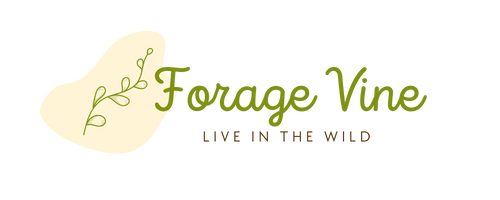Guide to Wild Lettuce Look-Alikes: How to Identify Edible Wild Lettuce
If you have ever walked through a wilderness area, chances are high that you’ve seen Wild Lettuce (Lactuca virosa). It has bright green foliage, often with large purple veins running throughout.
They may grow in sunny or shaded areas and reach heights up to 6-7 feet tall! As we explore this fascinating plant, let’s start by discussing how to identify true Wild Lettuce, as there are some look-alikes out there.
Read this ultimate guide To Wild Lettuce for a comprehensive breakdown of edibility and usage methods. We’ll also address any safety concerns related to harvesting wild Lettuce and more – all conveniently packaged into one helpful guide!
How to Identify Wild Lettuce (and potential look-alikes)
Identifying Wild Lettuce can be challenging, as several look-alikes make it difficult to distinguish the actual plant. To ensure you have the right plant, carefully examine its tissue and leaves.
Wild Lettuce leaves are grey-green, with jagged edges and deep veins forming a “V” shape when viewed from above. They have prominent white filaments attached at their base; if these are missing or broken it is not wild Lettuce. Additionally, each seed capsule has numerous small bristles on its surface.
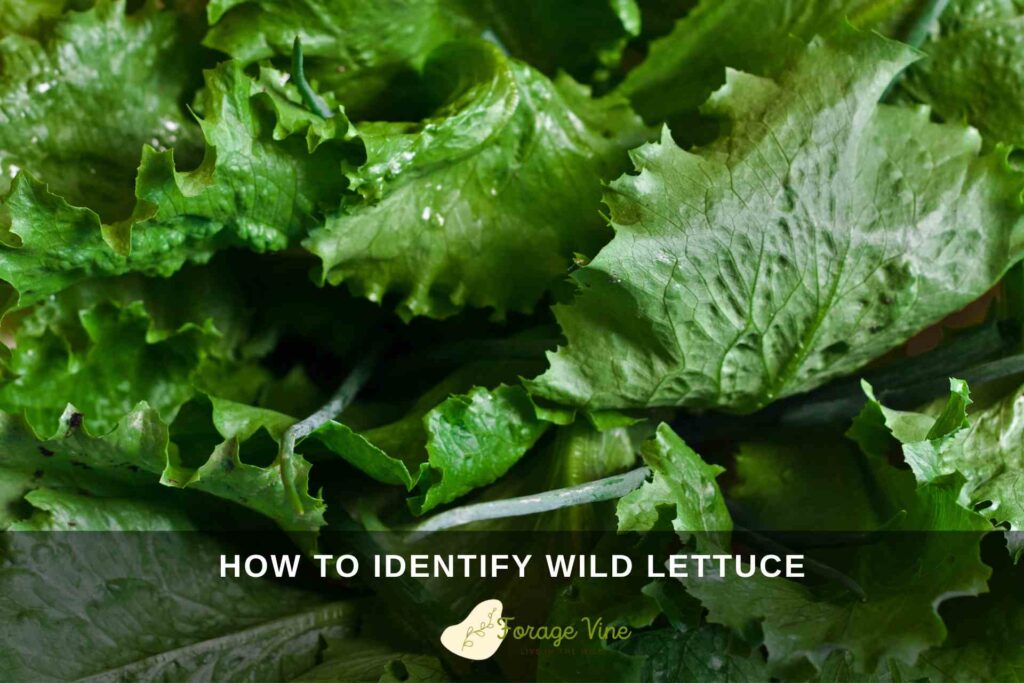
Is Wild Lettuce Edible, and how to properly consume it
Wild Lettuce has been used for centuries in many cultures and is recognized as being edible. Though it is mainly eaten cooked, consuming raw wild Lettuce can be beneficial since it contains many essential vitamins and minerals. However, caution should be taken to ensure that all plant parts have been checked for contaminants before eating and that care is taken when assessing safety.
Furthermore, various recipes can be found that use the rich flavor of wild lettuce leaves, stalks, and flowers. With the proper preparation methods, wild Lettuce can provide an exciting boost to your meals and become a new favorite quickly.
Benefits of consuming Wild Lettuce
Wild Lettuce has multiple health benefits that make it worth consuming regularly. It has mild sedative properties, acting as a natural relaxant for stressed or anxious people. Additionally, the leaves are rich in minerals and vitamins, such as iron, magnesium, zinc, and vitamin A, which offer nourishment for your body.
Moreover, it benefits people suffering from insomnia because of its calming presence in the system.
Finally, wild Lettuce can have anti-inflammatory effects on bronchial tubes, making it incredibly useful in curing congestion associated with colds or other respiratory diseases.
How to Grow Wild Lettuce
Wild Lettuce can be grown from seeds in soil rich with nutrients or by cutting off the leaves and planting them in the ground. They can also be produced with minimal watering, making them an ideal option for those living in dry climates.
Once your Wild Lettuce has been planted and watered, there is nothing else to worry about other than regular weeding and trimming off dead foliage.
With just minimal maintenance, your Wild Lettuce will reward you with its beauty and year-round greenery!
Recipes using Wild Lettuce
Wild Lettuce offers incredible diversity and flavor as an edible part of nature. Whether cooking a savory dish or a delightful dessert, Wild Lettuce can take your culinary journey to the next level.
The possibilities are endless, from classic recipes like Wild Lettuce soup to typical dishes such as creamy wild lettuce pesto that perfectly contrast with other greens!
But the best part about cooking with Wild Lettuce is how easy it is!
You can turn this fresh ingredient into a delicious and nutritious meal in no time with just a few ingredients.
5 Wild Lettuce Poisonous Look-Alikes
A range of deadly and dangerous look-alikes can be mistaken for wild Lettuce. Among them are dwarf dandelion, false hawksbeard, prickly Lettuce, sow thistle, and false purslane, which have similar foliage and appearance to wild Lettuce but contain toxins like oxalic acid and saponins.
Ingestion of any of these plants has been known to induce vomiting, nausea, stomach pain, and malaise. To ensure the safe harvesting of wild Lettuce, it is essential to know the difference between the two – better yet, if you need more clarification, stick to store-bought produce!
While the wild lettuce plant can be used in salads and medicinal remedies, its poisonous doppelgangers should never be ingested or touched.
Snakeroot (Polygala Senega)
Snakeroot (Polygala Senega) is an herb Native to North American prairies with a long and illustrious history in traditional medicine. While recent pharmacological studies have affirmed the presence of compounds with antiseptic and antimicrobial properties, it was the first use by Iroquois shamans for treating snake bites and respiratory ailments.
The root can be brewed into tea or mixed with honey for added flavor; its purported health benefits include relieving pain, flatulence, and indigestion and soothing stress, insomnia, and headaches. Consequently, snakeroot has become an essential ingredient in many herbal remedies today.
Popular among naturalist healers given its gentle virility and nourishing essence, snakeroot makes an ideal tonic for those seeking a safe and effective way to support wellness.
Stinging Nettle (Urtica Dioica)

Stinging nettle (Urtica dioica), a herbaceous flowering plant, is a unique and mysterious plant of great utility. With its stingy leaves and tall, rigid stems reaching up to ten feet in height, this wild relative of mint is found mainly in European countries such as Scotland, Wales, and Ireland.
However, it has also been spotted growing in other parts of the world including North America.
Althoug,. it can cause a severe skin rash upon contact due to the presence of invisible hairs on its surface, stinging nettle is believed to bring health benefits while being used safely as an herbal medicine, diuretic, astringent, and dietary supplement.
This traditional plant can also be enjoyed cooked in foods such as soup or noodles because the heat destroys the harmful elements on its surface that causes a rash. All these point out what an incredible thing this wild relative of mint is and make us learn never to underestimate any kind of creature available around us!
Indian Hemp (Apocynum Cannabinum)

Indian Hemp (Apocynum cannabinum) is a wildflower used for centuries in traditional medicine. This helpful plant is a member of the dogbane family and grows in open fields, along roadsides, and in other disturbed areas throughout much of North America and Canada.
The leaves can be steeped to make an herbal tea with anti-inflammatory and sedative effects, or the flowers can be dried to create a muscle relaxant to help treat pain and spasms.
In addition, this plant provides food for many species of butterflies, and its fragrant white flowers attract various pollinating insects. Indian Hemp is genuinely a stunning flower with medicinal benefits on multiple levels!
Common Milkweed (Asclepias syriaca)
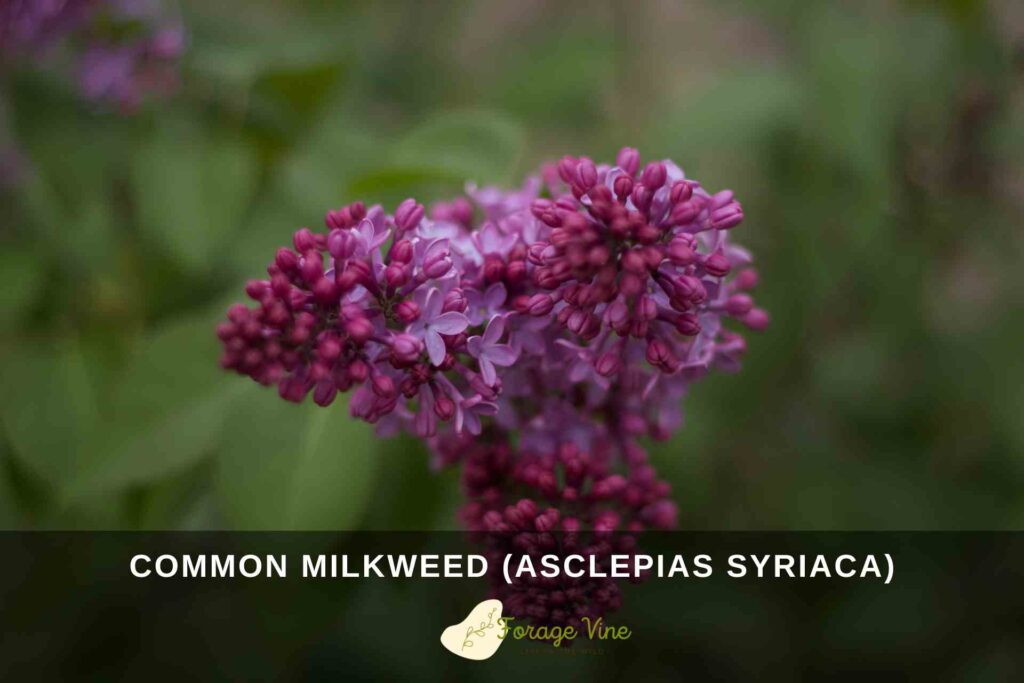
Common Milkweed (Asclepias syriaca) is an essential plant species native to North America. With proper care, this native plant can be a valuable asset to any setting! Its bright pink flowers and vibrant green leaves offer a lovely addition to any garden or landscape.
Not only is it aesthetically pleasing, but Common Milkweed also plays a vital role in its local ecosystem as they are the primary food source for monarch butterflies. This hardy perennial produces abundant seed pods that can be harvested and planted each spring to bring more milkweed into the area.
In addition, milkweed can help improve biodiversity by providing a safe haven for beneficial insects such as bees, pollinating birds, and other pollinators who feast on its nectar-rich flowers.
Poison Hemlock (Conium Maculatum)
Poison Hemlock (Conium Maculatum) is a common wildflower known to cause fatal poisoning when ingested.
Although its appearance doesn’t reveal its deadly nature, its growing popularity as an ornamental plant means people must be aware of the potential dangers of cultivating it in their gardens. It contains toxins that can sicken animals and humans, causing severe problems like seizures and comas.
To further heighten the danger, all parts of the plant are highly toxic, with no known antidote currently available. Despite being a fascinating species in its own right, it’s clear why Poison Hemlock is best left in its natural environment and not grown in gardens.
5 Wild Lettuce Non-Poisonous Look-Alikes
Identifying wild Lettuce from its poisonous look-alikes can be a tricky endeavor. Luckily, five distinguishing features help point out the difference between a stressed-out forager. Wild Lettuce is characterized by single rather than multiple stems, bright yellow flowers that form along stalks, and deeply lobed leaves which don’t curl like those of other weed species.
The color of the leaves also tends to differ, usually more vivid than competing weeds. Additionally, unlike any other type of substance, the entire plant will have a milky white sap when broken apart.
Finally, one can always rub the leaves on their skin – if it causes irritation or burning sensations, the non-edible vegetable should not be consumed! Knowing these telltale signs will help anyone identify edible wild lettuces with ease.
Milk Thistle/Prickly Wild Lettuce (Lactuca Serriola)
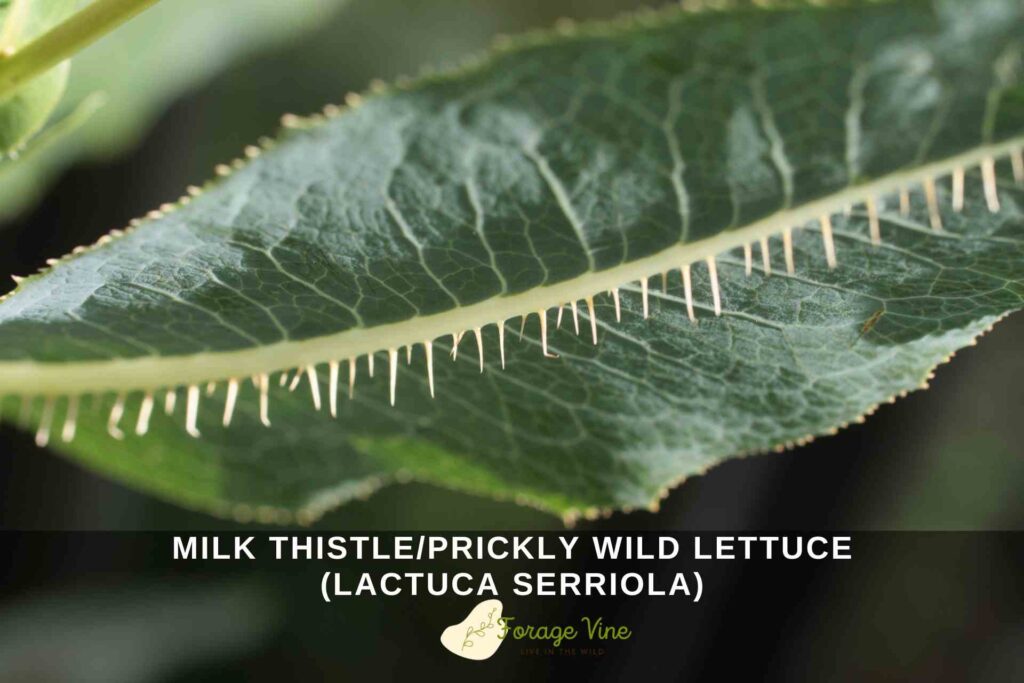
Milk thistle, prickly wild Lettuce (Lactuca Serriola), is an excellent medicinal herb with a whopping 3,000-year history.
Despite its somewhat intimidating spiny exterior, this beneficial herb can easily be added to teas or smoothies to receive all its excellent healing properties in an easy way that won’t leave you itching and scratching! Its impressive benefits include the ability to rid the body of toxins, reduce inflammation, improve digestive health, and protect the liver from damage.
It is even thought to possess cancer-fighting qualities in its active compounds, silymarin, and silybin, making it an incredibly powerful remedy for myriad ailments. It is no wonder that milk thistle has been used as a popular go-to cure for centuries and continues to be embraced by practitioners worldwide today.
Dandelion (Taraxacum Officinale)

The dandelion, also known as Taraxacum Officinale, is a fantastic herb used in herbal medicine for thousands of years. It has many health benefits, including boosting the immune system, reducing cholesterol levels, and treating cold symptoms.
The active chemicals in this herb can help reduce inflammation in the body too! Another fantastic dandelion benefit is it’s rich in vitamins and minerals – including vitamins A, C, D, and E and calcium, iron, and zinc.
Plus, it’s a natural diuretic that helps promote urination to flush toxins from the body. The versatile dandelion can treat chronic fatigue syndrome, eczema, and more. So if you are looking for a powerful little herb to add to your routine, look no further than the common dandelion!
Milkweed (Asclepias)
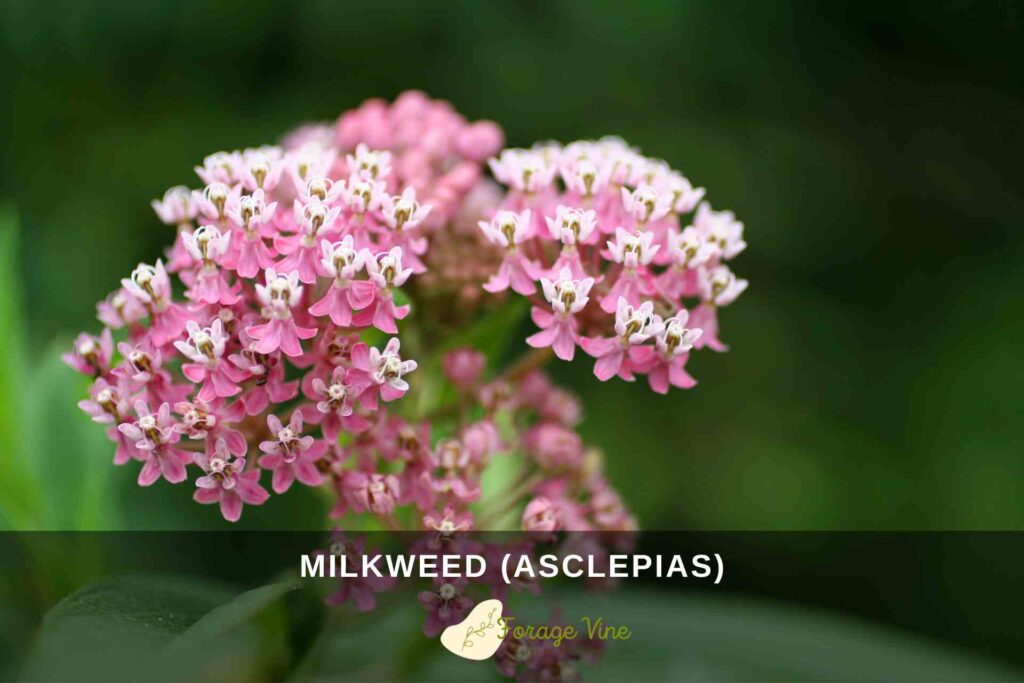
Milkweed (Asclepias) is a fantastic plant species used by humans for centuries due to its medicinal properties. It contains potent compounds such as cardiac glycosides, saponins, and flavonoids, which can be incorporated into various health remedies.
Milkweed also plays a significant role in our environment, providing shelter for beneficial insects, helping create bee-friendly habitats, and providing food sources for birds, mammals, and other healthy wildlife. In short, milkweed is a must-have species for its medicinal advantages and ability to provide essential resources to the planet’s ecosystem.
Sow Thistle (Sonchus Oleraceus)
The common sow thistle (Sonchus Oleraceus) is a hardy plant native to Europe. It can be confused with other weeds in the Sonchus family, yet its deep-toothed leaves and prickly stem make it easier to recognise. Sow thistles are wild edibles that serve as valuable food sources for animals, both wild and domesticated, as well as humans.
They are also used in traditional medicines around the world. Recent research has even suggested that Sonchus oleraceus may contain compounds beneficial to health and potentially even a cancer-fighting agent.
Overall, this remarkable plant, though sometimes reviled as a weed, still holds a firm place in many cultures and contexts due to its variety of uses.
Blue Wild Lettuce (Lactuca Biennis)

Blue wild Lettuce, known as Lactuca Biennis, is gaining popularity as an herbal supplement.
This distinctive plant has a long history of being used by Native Americans to treat various ailments, and its healing properties are becoming increasingly appreciated.
The leaves can be dried and used in teas or made into tinctures and salves. The seeds can be ground into powder, sprinkled onto other recipes, or added directly to foods.
Research shows that blue wild Lettuce is beneficial as an anti-inflammatory and pain reliever. In addition, it can improve brain health in senior citizens and may even help ward off neurological diseases such as dementia and Alzheimer’s.
With so many potential benefits, it’s no wonder blue wild Lettuce is becoming more popular daily!
